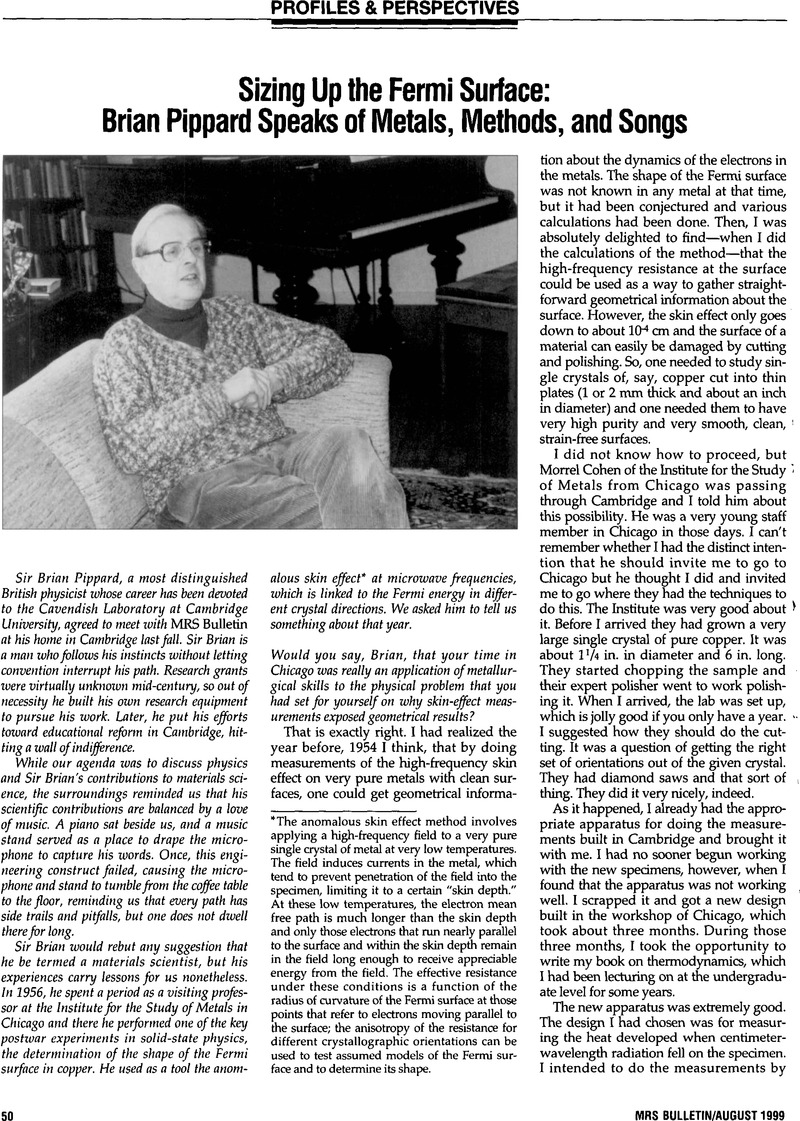Article contents
Sizing Up the Fermi Surface: Brian Pippard Speaks of Metals, Methods, and Songs
Published online by Cambridge University Press: 29 November 2013
Abstract

- Type
- Profiles & Perspectives
- Information
- Copyright
- Copyright © Materials Research Society 1999
References
* The anomalous skin effect method involves applying a high-frequency field to a very pure single crystal of metal at very low temperatures. The field induces currents in the metal, which tend to prevent penetration of the field into the specimen, limiting it to a certain “skin depth.” At these low temperatures, the electron mean free path is much longer than the skin depth and only those electrons that run nearly parallel to the surface and within the skin depth remain in the field long enough to receive appreciable energy from the field. The effective resistance under these conditions is a function of the radius of curvature of the Fermi surface at those points that refer to electrons moving parallel to the surface; the anisotropy of the resistance for different crystallographic orientations can be used to test assumed models of the Fermi surface and to determine its shape.
† The deHaas—van Alphen effect results when a strong magnetic field is applied to a single crystal of a metal at very low temperatures. The magnetic susceptibility oscillates periodically with the inverse of the magnetic field, and information about the shape and size of the Fermi surface can be derived from the period of this oscillation.
- 1
- Cited by


